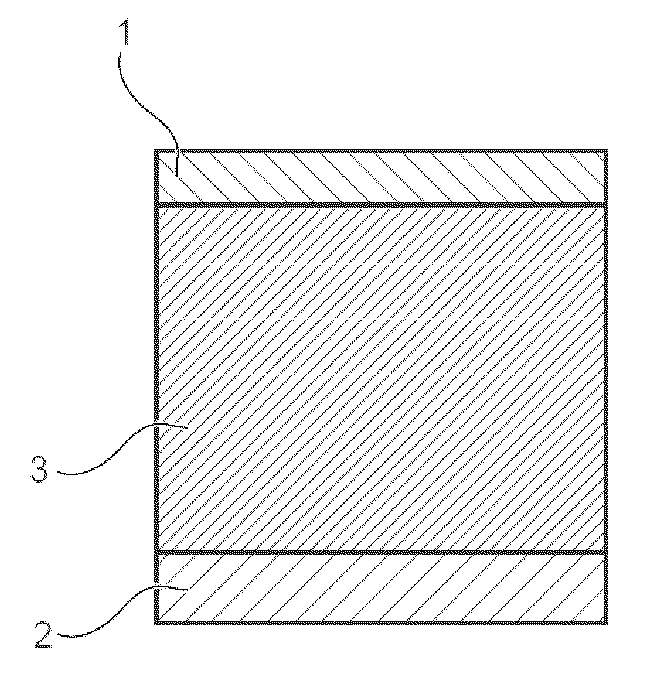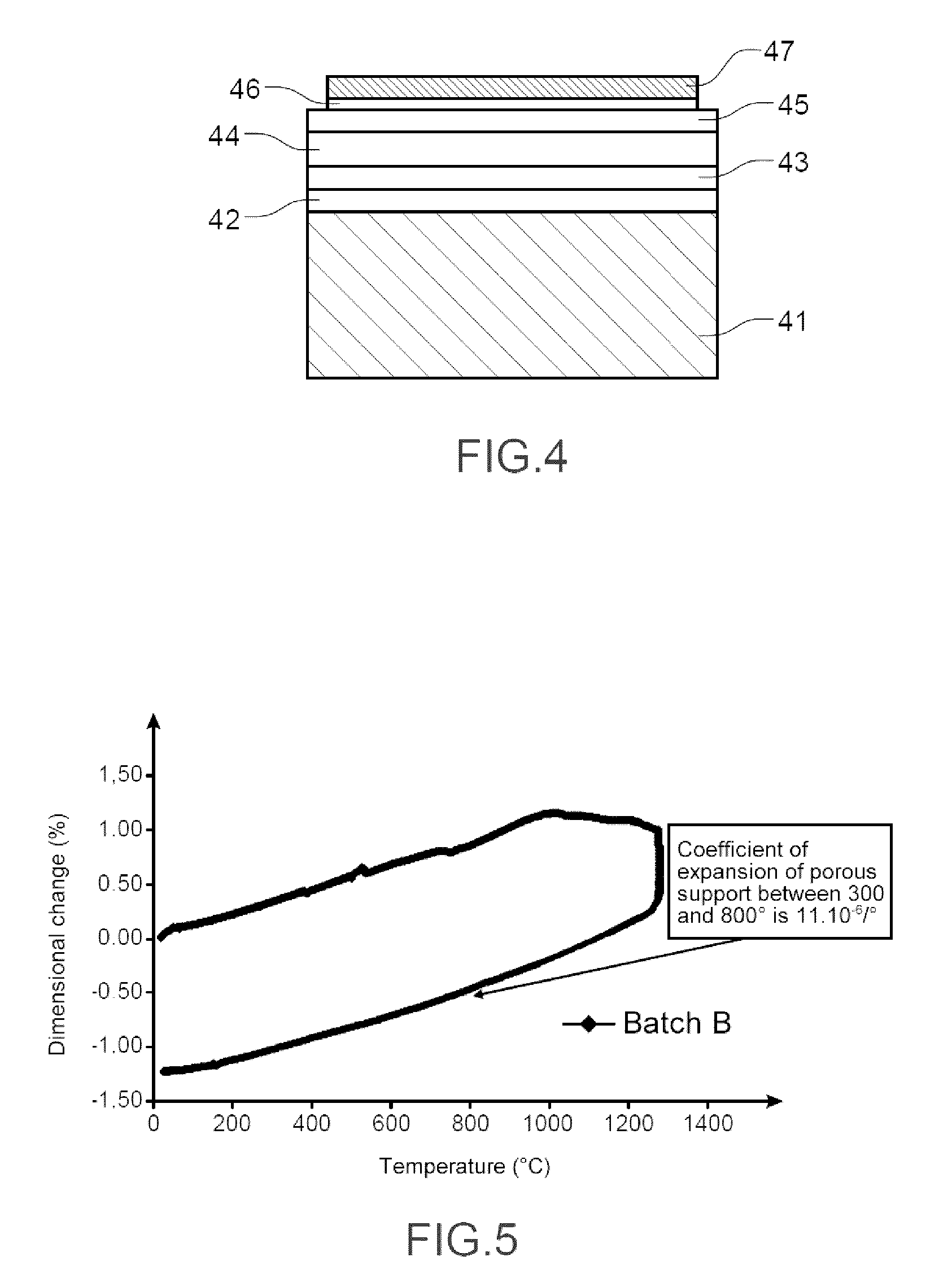Metal-supported electrochemical cell and method for fabricating same
a technology of electrochemical cells and metal supports, which is applied in the direction of cells, fuel cells, coatings, etc., can solve the problems of difficult mass production, complex parameter optimization, and difficult application on a mass production scale, and achieves the reduction of the total number of steps of the method, the effect of reducing costs and reducing the duration
- Summary
- Abstract
- Description
- Claims
- Application Information
AI Technical Summary
Benefits of technology
Problems solved by technology
Method used
Image
Examples
Embodiment Construction
[0130]The following detailed description is rather more given, for practical reasons, with reference to a method for preparing, fabricating a cell, preferably the cell according to the invention.
[0131]Let us first specify that the term porous such as used herein in connection with a material such as a metal or metal alloy, means that this material contains pores or voids.
[0132]Thus, the density of this porous material is accordingly lower than the theoretical density of the non-porous material.
[0133]In the meaning of the invention, the support or a layer is generally considered to be porous if its density is at most about 92% of its theoretical density.
[0134]The pores may be joined together (connected) or isolated, but in the porous metal substrate and in the other porous layers of the cell of the invention, most of the pores are joined (connected) and are in communication. The term open porosity is then used.
[0135]More specifically, in the meaning of the invention, a support or lay...
PUM
| Property | Measurement | Unit |
|---|---|---|
| Temperature | aaaaa | aaaaa |
| Temperature | aaaaa | aaaaa |
| Temperature | aaaaa | aaaaa |
Abstract
Description
Claims
Application Information
 Login to View More
Login to View More - R&D
- Intellectual Property
- Life Sciences
- Materials
- Tech Scout
- Unparalleled Data Quality
- Higher Quality Content
- 60% Fewer Hallucinations
Browse by: Latest US Patents, China's latest patents, Technical Efficacy Thesaurus, Application Domain, Technology Topic, Popular Technical Reports.
© 2025 PatSnap. All rights reserved.Legal|Privacy policy|Modern Slavery Act Transparency Statement|Sitemap|About US| Contact US: help@patsnap.com



